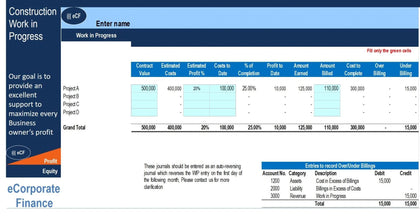Plumbing Business: Financial Model for Scaling
Plumbing Business: Financial Model for Scaling
Available:
In Stock
$45.00
In general, this model would fit the logic for a plumbing business or electrician business operating. It was designed for scaling and testing various assumptions so the user can understand unit economics of starting up and operating a service business where laborers go out and provide a service, the company takes a one-time fee, and the laborers get paid an hourly rate.
There are dynamic revenue assumptions for up to three service tiers, differentiated by job count/growth, average price charged per job, average hours to complete a job, and average jobs completed per laborer per month. These can be configured in each of the 10 years for each service tier.
Variable expenses are really important for a scaling financial model. Based on the assumption that a single plumber / electrician will need a single truck, the costs per month per truck will be an input (maintenance / insurance / other costs).
Costs per job (such as equipment used, pipes / materials / etc...) can be defined for each service type.
The idea is to test pricing, job volume, labor costs in order to see what kind of scale can be achieved and what costs come along with it.
Final outputs include monthly and annual financial statements, DCF Analysis, IRR, NPV, cash flow, minimum investment required, and lots of KPI visualizations.
There are dynamic revenue assumptions for up to three service tiers, differentiated by job count/growth, average price charged per job, average hours to complete a job, and average jobs completed per laborer per month. These can be configured in each of the 10 years for each service tier.
Variable expenses are really important for a scaling financial model. Based on the assumption that a single plumber / electrician will need a single truck, the costs per month per truck will be an input (maintenance / insurance / other costs).
Costs per job (such as equipment used, pipes / materials / etc...) can be defined for each service type.
The idea is to test pricing, job volume, labor costs in order to see what kind of scale can be achieved and what costs come along with it.
Final outputs include monthly and annual financial statements, DCF Analysis, IRR, NPV, cash flow, minimum investment required, and lots of KPI visualizations.



























